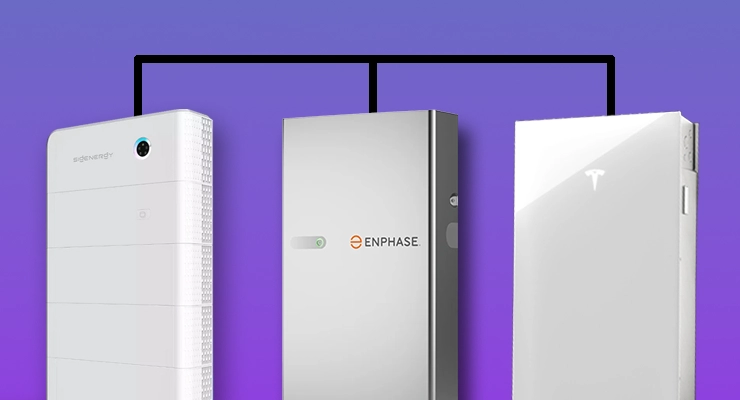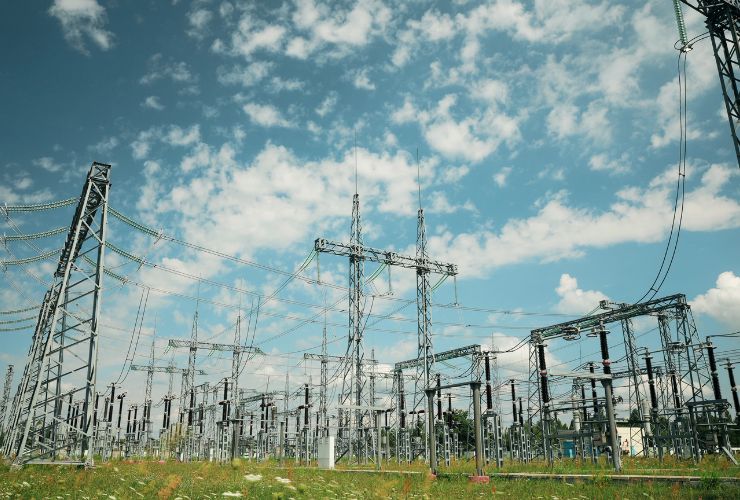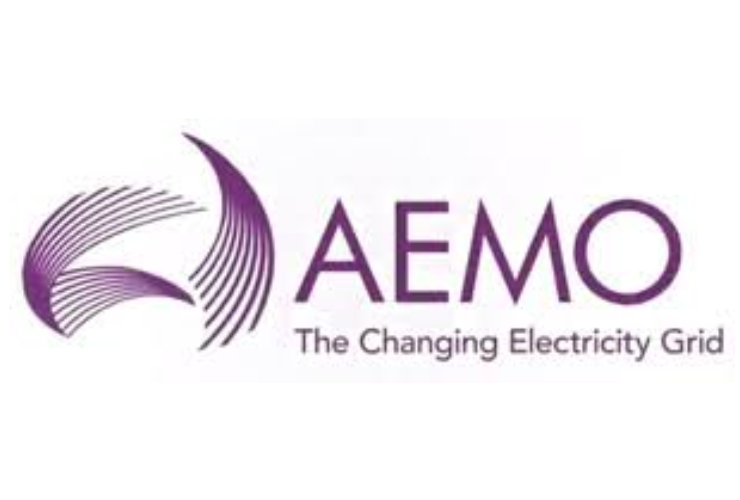Fast read
Home batteries primarily integrate with Australia's National Electricity Market (NEM) through Virtual Power Plants (VPPs), which are networks of individual batteries managed by an operator to support the grid. By joining a VPP, you can earn financial rewards for allowing the operator to use your stored energy during times of high demand, helping stabilise the grid and reducing the need for fossil-fuel power plants. This integration is becoming increasingly sophisticated with smart technology and is supported by new and updated government incentives commencing from July 2025.
How do home batteries integrate with the National Electricity Market (NEM)?
As Australian homes increasingly adopt solar and battery storage, a common question arises: How does my individual system connect with the bigger picture? Your home battery is more than just a backup power source; it’s a small but powerful asset that can interact with and support the entire National Electricity Market (NEM). This integration happens in a few key ways, turning your home into an active participant in Australia’s energy future.
The rise of the virtual power plant (VPP)
The most significant way your home battery integrates with the NEM is by joining a Virtual Power Plant, or VPP. A VPP is a network of decentralised energy resources, like thousands of home batteries, all connected and managed by cloud-based software. This allows a central operator, often an energy retailer, to orchestrate these systems to act like a single, large power plant.
When the grid is under stress—for example, during a heatwave when air conditioner use soars—the VPP operator can draw a small amount of stored energy from each battery in the network. This collective power is then sent to the grid to meet high demand, helping to prevent blackouts and maintain stability. In return for participating, you are typically rewarded with financial incentives, such as bill credits, higher feed-in tariffs, or direct payments.
This model provides benefits for everyone. You get a better return on your battery investment, and the grid becomes more resilient and less reliant on traditional fossil-fuel “peaker” plants, which are expensive and polluting.
How does a VPP work in practice?
Joining a VPP is a straightforward process. Once you have a compatible solar and battery system, you can sign up for a VPP program offered by an energy retailer. The VPP operator then uses smart software to communicate with your battery system.
It’s important to understand that when you join a VPP, you give the operator permission to control your battery’s charging and discharging. However, most programs are designed to protect your interests. They often guarantee that a minimum reserve of energy is always kept for your personal use, ensuring you still have backup power during an outage.
Major energy providers like AGL, Origin, and EnergyAustralia, along with newer players like Amber Electric, all offer VPP programs across various states. The eligibility and rewards vary, so it’s crucial to compare offers.
What technology makes VPPs possible?
Sophisticated hardware and software are the backbone of this integration. Modern hybrid inverters and batteries are designed to be “VPP-ready.”
For example, leading inverter brands like Sungrow are widely used in Australian VPPs and are compatible with programs from major retailers like Origin and Amber. Their systems are designed to seamlessly interact with VPP software, managing the flow of energy between your home, your battery, and the grid.
Similarly, the well-known Tesla Powerwall is a cornerstone of many VPPs, including the South Australia VPP, which is managed by retailer Energy Locals in partnership with the SA Government.
Newer, innovative systems are also making a mark. Brands like Sigenergy are integrating AI-powered energy management into their 5-in-1 systems, which combine the inverter, battery, and even EV charging. This AI can optimise your energy use based on weather forecasts and market price signals, and their platforms are built to easily integrate with VPP providers.
Demand response programs and future integration
Beyond VPPs, home batteries can participate in broader “demand response” initiatives. These programs reward energy users for reducing their electricity consumption during peak times to help balance the grid. While historically focused on large industrial users, residential batteries are increasingly being included in these schemes.
The Australian Energy Market Operator (AEMO), which manages the NEM, recognises the critical role of these distributed resources. On 19 December 2024, the Australian Energy Market Commission (AEMC) published a final rule to better integrate these resources. This new framework, called ‘dispatch mode’, will allow aggregated resources like VPPs to be scheduled and dispatched into the NEM, competing directly with large-scale generators. According to AEMO, the operation of the new ‘dispatch mode’ is scheduled to commence on 23 May 2027. To drive early participation, an incentive scheme will be established, with the incentive period scheduled to begin in the first half of 2026. This move signifies a major shift towards a more decentralised, efficient, and resilient grid powered by assets like your home battery.
Key questions to ask before joining a VPP
While VPPs offer great benefits, they are not all the same. Here are some crucial questions to ask a provider before you sign up:
- What are the financial incentives? Do you receive a fixed bill credit, a higher feed-in tariff, or a share of wholesale market revenue?
- Which battery and inverter brands are compatible? Ensure your existing or planned system will work with the program.
- How much control do I retain? Ask what percentage of your battery is reserved for your own backup power.
- What is the contract length, and are there exit fees? Understand the terms of the agreement and if you can opt out easily.
- How might it affect my battery’s lifespan? Increased usage can impact battery degradation, although some argue that intelligent VPP management can optimise performance. It’s important to weigh this against the financial returns.
What is the government’s role?
The Australian Government is actively encouraging battery uptake and NEM integration. The federal Cheaper Home Batteries Program, starting 1 July 2025, will provide a discount on the upfront cost of installing a home battery. This discount is based on the battery’s usable capacity and will gradually decrease each year. Importantly, systems physically installed before this date may still be eligible for the rebate, as long as they are not officially certified as operational until on or after 1 July 2025.
State-based schemes also interact with this new program. For example, from 1 July 2025, NSW’s Peak Demand Reduction Scheme will suspend its upfront installation rebate, which is effectively replaced by the larger federal discount. However, the NSW scheme will simultaneously increase the incentive for connecting a battery to a VPP, which can be claimed in addition to the federal rebate, making the combination particularly attractive. For instance, the upfront incentive for connecting a 27 kWh battery to a VPP could rise to up to $1,500.
By combining these incentives with VPP earnings, the financial case for installing a home battery is becoming stronger than ever, paving the way for a smarter, cleaner, and more distributed energy system for all Australians.





